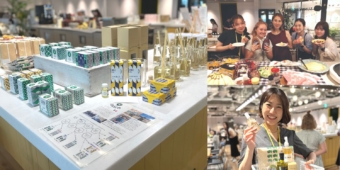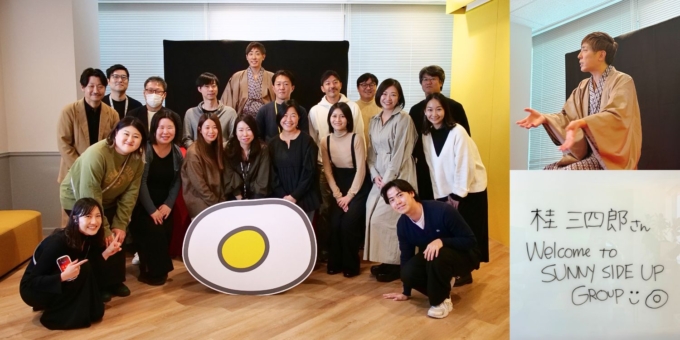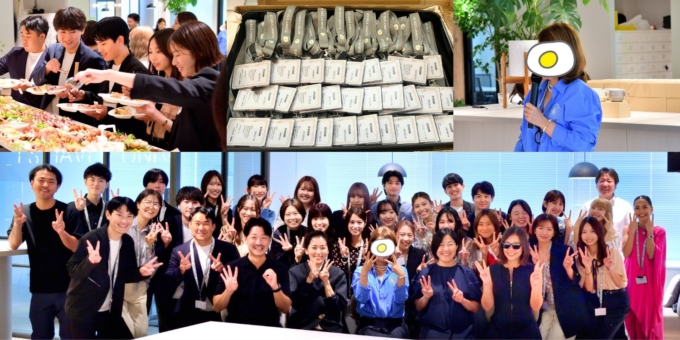The Report from Sea of Trees, Part Two: Introducing excursion course of Aokigahara⛰️
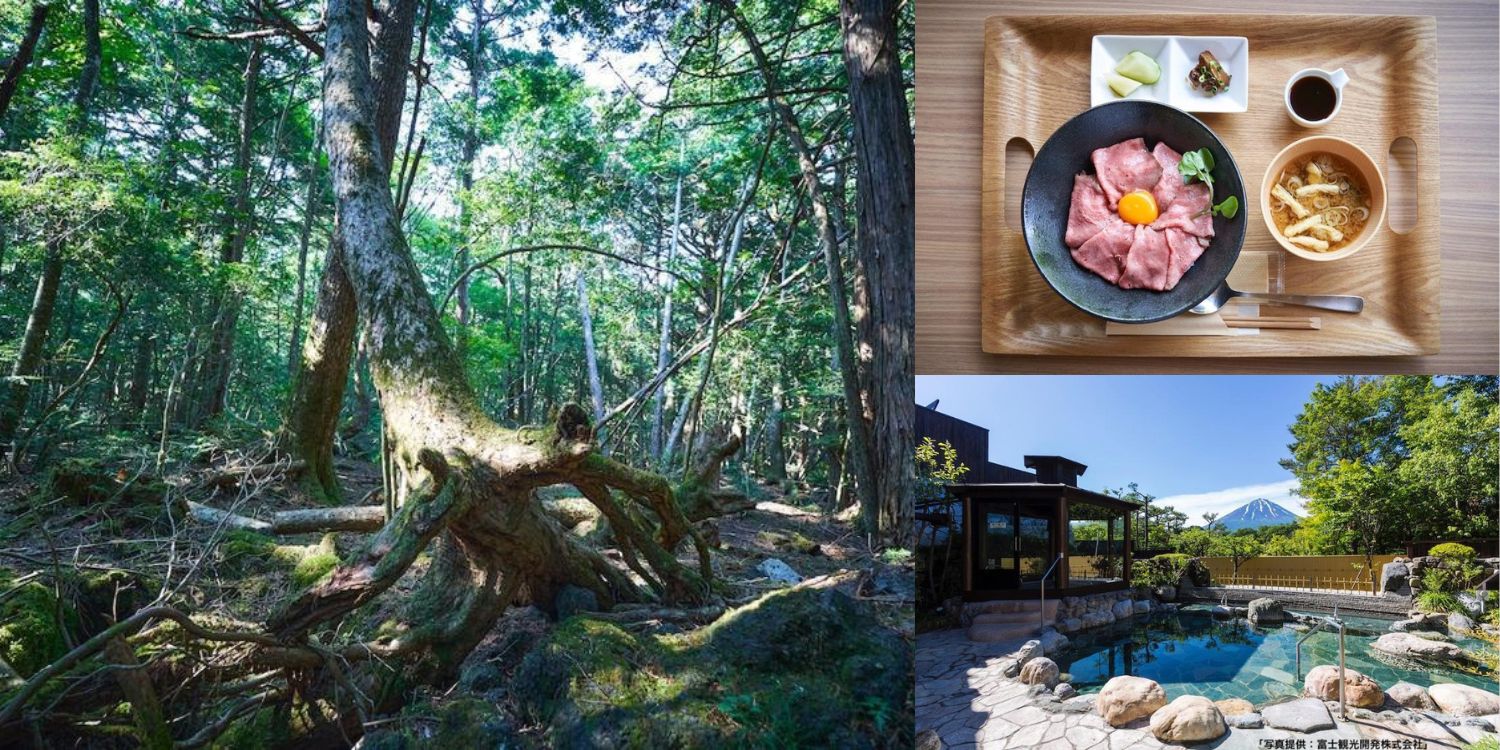
Hello, everyone! I’m Yuki Ota, and it’s my first year in the Social Relations Div. 3.
What comes to mind when you hear about Aokigahara Jukai(sea of trees)?
While some may conjure up pleasant images of abundant nature, camping, or its proximity to Fuji-Q Highland, others might associate it with more negative impressions, such as being scary or dangerous.
Actually, I was one of those people. Due to urban legends, I had this image of the forest as a “scary place.”
However, my image completely changed when I recently participated in a media tour around Aokigahara Jukai And its surrounding tourist spots.
\\Aokigahara Jukai is rich in nature and is a wonderful place!/
That’s my impression after completing the tour. Today I’d like to share how this tour changed my image of the forests!
▼Check out the previous article here.
Truly ‘Mystical’! Reporting on the Three Undiscovered Charms of Aokigahara Jukai
〈What is Aokigahara Jukai?〉

Aokigahara Jukai is a primeval forest that grew on top of old lava from Mount Fuji’s big eruption known as the “Jogan eruption” back in 864 AD, approximately 1,200 years ago. It spans the towns of Fujikawaguchiko and Narusawa in Yamanashi Prefecture. People say it got its name, ‘Jukai (Sea of Trees),’ because the trees look like waves when you see them from Mount Fuji.
This forest is part of the Fuji-Hakone-Izu National Park and is also designated as a National Natural Monument.
〈The Tour Begins〉
It’s about an hour from Shinjuku on the express train Kaiji 19. We gathered at JR Otsuki Station, and now the tour is starting.
First off, we’re heading to the “Mount Fuji Research Institute, Yamanashi Prefectural Government.” Right after getting on the bus, we could see the beautiful Mount Fuji!
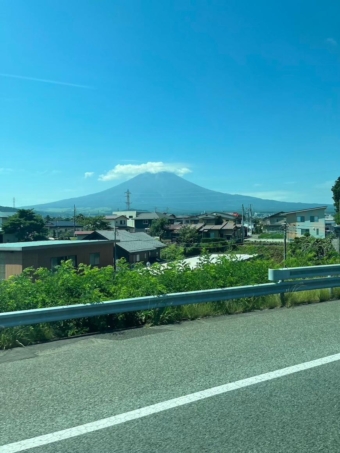
The Mount Fuji Research Institute, Yamanashi Prefectural Government is a research facility that scientifically explores various aspects of Mount Fuji, a symbol of Japan. It seeks strategies to ‘protect’ and ‘utilize’ Mount Fuji as a globally shared asset by shining light on it from different perspectives. On this tour, before heading into the forest, we visited this facility and Mr. Uchiyama, a researcher, taught us about the origins of the Jukai.
Although broadly described as a primeval forest formed on top of lava, the Aokigahara Jukai has unique characteristics specific to itself. These include variations in the types of lava (rough A’a lava, smooth Pahoehoe lava) and mechanisms for trees to grow on the lava. These features contribute to the distinctiveness of the Aokigahara Jukai. Listening to the researcher’s explanation brought back memories of geology class back in high school.

The institute also has a lot more to offer, like diagrams showing the terrain of Mount Fuji and its surroundings, lava samples, displays of animals you might encounter in Aokigahara Jukai, and books and videos of Mount Fuji and the local environment. It is a perfect place for both children and adults to learn.
・The Mount Fuji Research Institute, Yamanashi Prefectural Government
https://www.mfri.pref.yamanashi.jp/
〈Lunch Break & Shopping Time〉
Studying sure works up an appetite, doesn’t it? Before we set out to explore the forest, we stopped by at “Tabi no Eki kawaguchiko base,” a spot that just opened in July 2022.
The menu changes with the seasons, but this time, I treated myself to a delicious “Roast Koshu Beef Rice Bowl.”

The meat was incredibly tender, and the egg yolk mixed with the sauce made it absolutely delicious.
After satisfying our hunger, we had a brief moment for shopping. The booths selling local specialties had Yamanashi’s famous peaches and fresh vegetables on display. There were lots of products to choose from, but since we couldn’t stay long, I’m looking forward to coming back to “Tabi no Eki” for a more leisurely visit next time.
・Tabi no Eki kawaguchiko base
https://www.kawaguchikobase.com/
〈A Taste of Abroad at Yamanashi’s Trendy Spot〉
After filling our bellies, are we finally ready to wander through the Jukai?
Not quite yet—we still had some more of Yamanashi’s recommended places to visit.
The next stop was “Fuji Oishi Hanaterrace,” a spot so stunning with its Western-style buildings, lush greenery, and beautiful flowers that you might find yourself asking, “Is this really Yamanashi?”

Fuji Oishi Hanaterrace is right next to Oishi Park, which is by Lake Kawaguchi, where you can enjoy views of the surrounding trees and Mount Fuji. During lavender season, it’s the perfect place to snap the ultimate trio: lavender fields, Lake Kawaguchi, and Mount Fuji. There are shops selling sweets and souvenirs from Yamanashi, trendy cafes, and even a store with Japanese-style goods!
While there, I had the pleasure of enjoying a seasonal peach parfait.

・Fuji Oishi Hanaterrace
https://www.fujioishihanaterasu.com/
〈Finally, to the Jukai〉
We’ve learned a lot, filled our stomachs, done some shopping, and even enjoyed a sweet treat. It’s been a jam-packed tour already, but the real highlight is just starting—our trek into the Aokigahara Forest.
Right after stepping off the bus on the national road, we found ourselves surrounded by the forest.
While enjoying the fresh, tasty air, a ten-minute walk took us to “Ryugu Cave,” one of the many lava caves in Aokigahara at the foot of Mount Fuji.
This spot is also a nationally designated natural monument and is home to the fifth spiritual spot of the “Fuji-ko Hakkai Pilgrimage.” The day was scorching, with temperatures exceeding 35 degrees Celsius, but as we descended the stairs into the cave, it gradually became cooler. It was even a bit chilly for short sleeves.

When we looked up from inside the cave, we could see sunlight coming through the trees. It felt magical.
It was a sunny day, so the coolness inside the cave was a nice break from the heat.
Next, we visited the “Fugaku Wind Cave.” It’s a horizontal cave formed by lava flows after an eruption. The cave is 201 meters long and 8.7 meters high, making it easy for both kids and the elderly to walk through, which is why it was crowded with tourists.
The average temperature inside is 3 degrees Celsius! As we descended about halfway down the stairs, the temperature dropped suddenly, so I quickly put on the jacket I had been too lazy to wear earlier lol.
Until the early Showa period, it was used as a natural refrigerator. They used to store silkworms for silk threading and plant seeds there.

Inside the Fugaku Wind Cave, it wasn’t as narrow as I expected. At 158cm tall, I could explore almost without having to duck down.
Inside, you can see rope-like lava that solidifies quickly, ice that doesn’t melt even in summer, and luminescent moss. The way they’re lit up was really mystical.
To head to our next destination, Narusawa Ice Cave, we took the “Tokai Nature Trail” that lets you enjoy the Jukai along the way.
Although I had imagined Aokigahara Jukai to be dimly lit, it was actually beautifully illuminated by the sunlight filtering through the lush, green trees, reminiscent of a scene from a Ghibli movie. The trail had enough shade, and the air was so refreshing that the heat didn’t bother us at all, allowing us to hike with ease.


Now, everyone, have you ever heard the rumor that once you enter the Jukai, it’s impossible to find your way out?
There are also tales of compasses spinning out of control, losing all sense of direction. Before setting out, even my colleagues half-jokingly, half-seriously told me, “Make sure you come back safely.”
Do you really lose your sense of direction in the Jukai? I tested to see if a compass would really spin, but it didn’t happen.
The reason for such stories might be because some of the lava contains magnetic materials that can occasionally cause a compass needle to waver or spin. However, I learned that if you use a compass about 30cm above the ground or lava, it won’t be affected and should work correctly. I was curious and hoped to see the needle spin, so I brought it close to the rocks on the ground, but unfortunately, nothing happened.

As we walked along the trail, I started to realize that being in a forest that grew on top of lava meant that I could see lots of trees with interesting shapes.

From trees with roots spreading sideways and growing at unstable angles,

To trees where two trunks were twined around a single tree, supporting each other.
Because the ground is made of lava, the trees can’t root deeply and are easily toppled by strong winds. Despite this challenging environment, you can really feel the strength and beauty of life’s persistence in nature.
The Tokai Nature Trail has sections where lava rocks jut out here and there, but the path is well-maintained, making it easy to walk. There are several spots that seem perfect for taking pictures. It was quiet, allowing me to fully enjoy myself in nature.

After about an hour of wandering through the Aokigahara Jukai, we reached our final destination, the Narusawa Ice Cave. At the entrance, a sign indicated the temperature inside was around 0 degrees Celsius.
Remembering what I learned at the Fugaku Wind Cave, I put on my jacket before heading in.
A staff member warned us, “Watch your head; there are some low spots inside.” But they turned out to be even lower than I expected.

Moving forward in a crouched position and being mindful of the low ceiling, I was able to see ice that doesn’t melt even in summer. It was lit up and looked truly fantastical.

The Narusawa Ice Cave is 153 meters long in total, and since it’s a vertical, circular cave, you can loop all the way around it.
・Natural Monument: Fugaku Wind Cave・Narusawa Ice Cave
https://www.mtfuji-cave.com/
〈Ending the Journey with a Hot Spring〉
After exploring the forest, we relaxed at the hot spring”Fuji Chobo no yu Yurari” not far from the Narusawa Ice Cave. They have different kinds of baths, including one in a cave and another with roses. If the weather’s good, you can even see Mount Fuji from the outdoor bath. It’s a great place to wash away the tiredness from the trip.

・Fuji Chobo no yu Yurari
https://www.fuji-yurari.jp/
〈My Image Has Changed! The Aokigahara Jukai Tour〉
This tour is definitely one I’d recommend if you’re near Lake Kawaguchi. It’s just about a two-hour drive from the city center, making it a perfect spot for an autumn drive!
Also, Aokigahara Jukai presents a different scene with each season, so no matter when you visit, you’re sure to enjoy it.
This tour completely changed my image of the Jukai. I’ve fallen in love with the beautiful nature, the fresh air, and the enchanting atmosphere.
And it wasn’t scary at all.
If this blog has made you even a little bit curious, I definitely recommend visiting! You’re sure to discover the charm of Aokigahara yourself!








